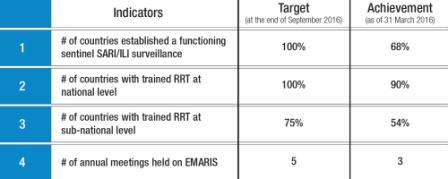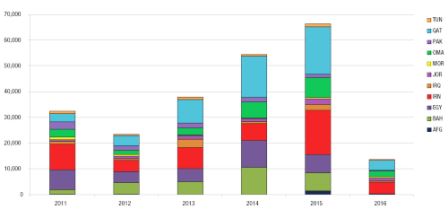Highlights
15 out of 22 countries in the Region have reported conducting surveillance for influenza-like illness (ILI) and severe acute respiratory infections (SARI) or both.
16 centres are currently designated as national influenza centres by WHO in the Region. Out of these, 13 centres are functional with the capacity to isolate influenza virus.
20 out of 22 countries have trained multi-disciplinary rapid response team capable of investigating and responding to potential influenza epidemic or any other respiratory outbreaks caused by a novel virus.
At least 6 countries in the Region have generated data on the burden of influenza and ILI using sentinel surveillance data.
Epidemiological surveillance
Surveillance for ILI and SARI has been enhanced and expanded in Eastern Mediterranean Region with the aim of improving epidemiologic and virological monitoring of severe influenza-associated disease. Currently, 15 out of 22 countries have reported conducting surveillance for SARI, ILI or both.
Regular technical missions were conducted by the WHO Regional Office to support Member States’ effort to strengthen their SARI/ILI surveillance system promoting the integration of the epidemiological and virological surveillance system for SARI and ILI.
Influenza guidance documents and reporting tools were distributed to Member States to support in their efforts to develop and strengthen influenza surveillance and pandemic preparedness.
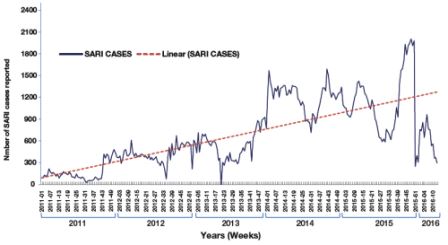
Figure 1.Trend of SARI cases reported to FLU-ID by countries of the Region 2011–2016
Figure 2. Outcome indicators for influenza epidemiological surveillance
Virological surveillance
16 national laboratories were designated as national influenza centres in the Region, and 13 of them are functioning with the responsibility of detecting and isolating influenza viruses. As a result, the specimen collection and testing capacity have increased significantly in the last few years.
The most frequently identified influenza virus type detected by the centres in the last few years was influenza A, with influenza A (H1N1) pdm09 viruses predominating.
The proportion of samples testing positive for influenza A and B has increased as more national influenza reference laboratories become operational.
The number of influenza specimens reported to FluNet from participating centres increased significantly from 32 345 (2011) to 66 000 (2015).
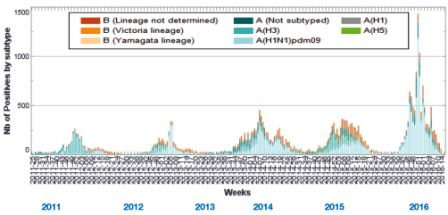
Figure 3. Number of specimens positive for influenza by subtype in the Region, 2010–2016
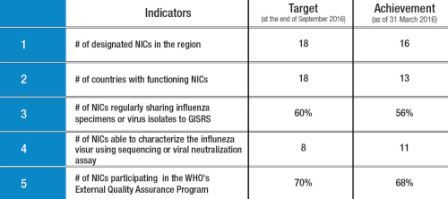
Figure 4. Outcome indicators for influenza virological surveillance
Figure 5. Number of specimens processed and reported to FLUNET from 11 national influenza centres in the Region, 2011–2016
Outbreak response
Invested in building the capacity of regional and national rapid response teams to support influenza outbreak investigation and response. In 2014–2015, 3 inter-country training were held for rapid response capacities in the Region.
Supported the influenza outbreak investigation in several countries in the Region. In recent time, support was provided to Egypt, Kuwait, Jordan, Libya, Iraq, Pakistan, Palestine, Syria and Tunisia to investigate and respond to seasonal influenza outbreak.
Risk communication capacity-building activities for Member States were conducted that led to the identification of country focal persons and the establishment of the Risk Communication Network in the Eastern Mediterranean Region. The WHO Regional Office also conducted missions to assess the risk communication capacities of 2 countries.
Disease burden
Disease burden estimation has been prioritized in the Region. Egypt, Islamic Republic of Iran, Tunisia and Oman have completed burden exercises, and results are being published. Jordan and Morocco are in process to conduct the burden estimation studies.
A thematic issue of Eastern Mediterranean Health Journal, a regional, peer-reviewed journal published by WHO Regional Office is being prepared and will be issued in August 2016. The issue will include disease burden studies, reviews on influenza and emerging respiratory infections in the Region.








